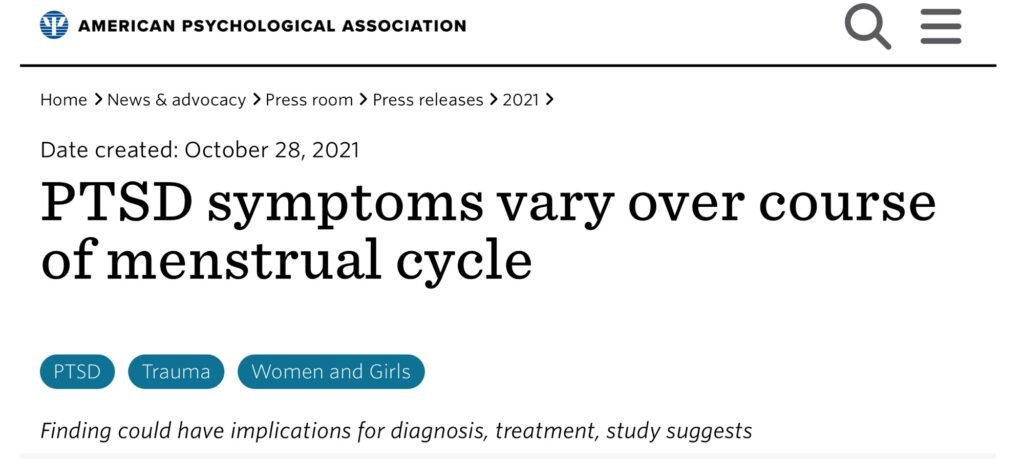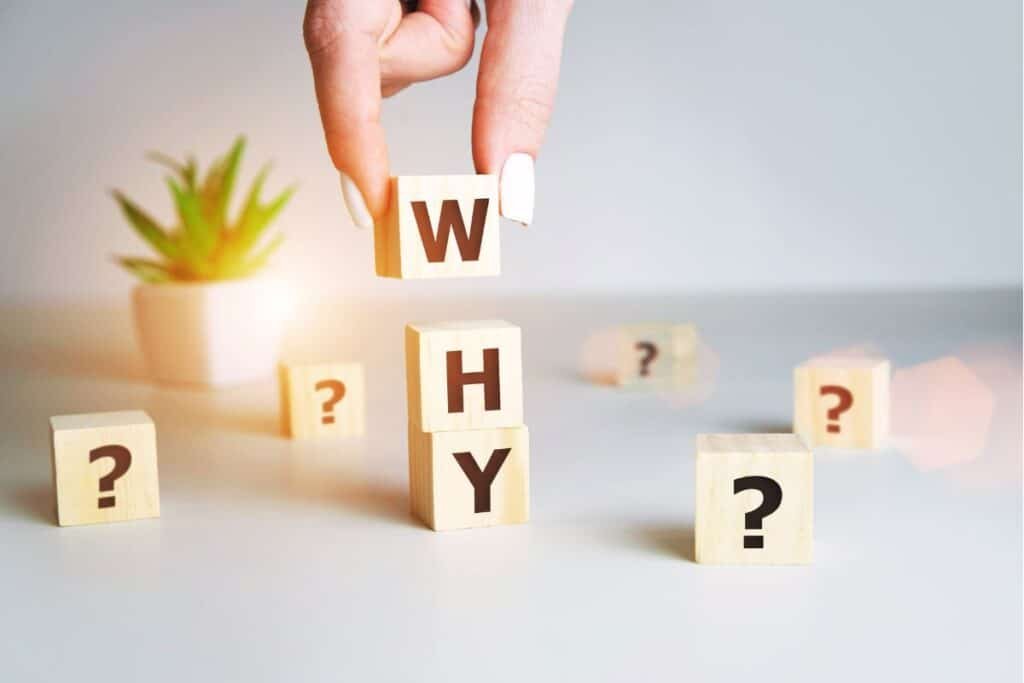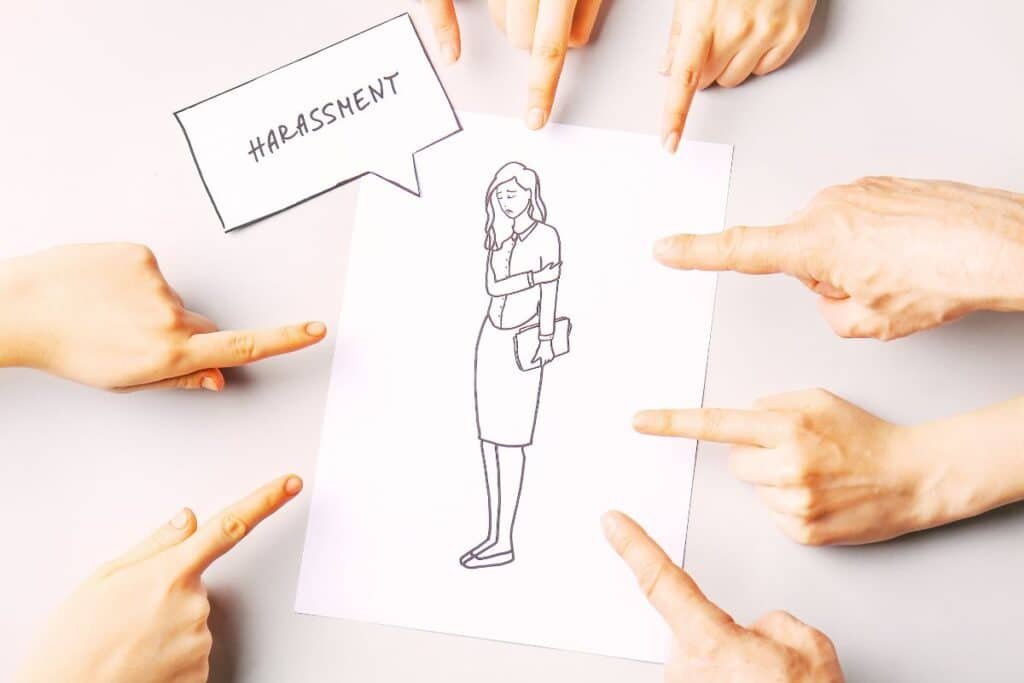I was sitting in the car this afternoon waiting to do the school pick-up. I was feeling a bit low and the age-old thoughts of what had happened to me started to resurface. I say started, they’d been in the back of my mind all day. It was making me feel low and tearful and I couldn’t figure out why. Nothing had triggered me as far as I could tell.
Then a thought occurred to me.
I’d just started my period.
Could there be a link between my hormonal changes and the increase of PTSD symptoms that I was currently feeling?
Cue a rabbit-hole of research to answer this very question. And what I found, shocked me.
PTSD Research is Mainly Carried Out on Men
First, I found out that most research on PTSD has been carried out on, surprise, surprise, men. This does make sense, seeing as how PTSD was first considered in the form of ‘shell-shock’ in WW1 soldiers. But WW1 was well over 100 years ago now; surely there’s more up-to-date research that includes women and PTSD?
So much medical research is based on the male body, which is ridiculous when you consider that females make up around 52% of the planet. Perhaps that should read ‘people with female hormones.’ I’m unsure; please let me know if you have a better way to write that. I know what I mean, but I don’t want to offend anyone who doesn’t identify as male or female.
We need to move away from this nonsense that all bodies are the same and realise that male and female bodies are very different. Especially when you consider factors such as hormones.
And it’s hormones that bring me nicely onto the study that I did find.
How Your Period Affects Symptoms of PTSD
In 2021, research published by the American Psychological Association found that a female’s hormones can play a huge role in how that individual exhibits symptoms of PTSD.
In fact, the research of 40 women aged between 18 and 33 years old, who had experienced or witnessed traumatic events (including issues relating to VAWG), were found to have worsened symptoms of PTSD when they were on their period.
Estradiol’s Role in Your Menstrual Cycle
Estradiol is a form of the hormone estrogen. Estradiol plays a pivotal role in regulating the female reproductive cycle.
During the follicular phase of your cycle, estradiol levels rise. This rise in estradiol leads to ovulation.
Low estradiol levels can increase the brain’s limbic regions. These limbic regions are responsible for processing emotion. These hormonal fluctuations have been linked to heightened stress, anxiety, and fear responses.
The women who participated in this study found that during the follicular phase of their cycle (when they were on their period), their PTSD symptoms were worse. This is when their estradiol levels were at their lowest.
A couple of weeks later, when the women were heading towards ovulation, and they had higher estradiol levels, their PTSD symptoms were significantly lower.

Why Are These Findings Important?
Being able to link your PTSD symptom severity with your menstrual cycle is important for several reasons.
Reason 1: Managing Symptoms
Managing symptoms of PTSD can be challenging. Sometimes, I find that you just need to try and ride the wave as best you can.
But if you know that your PTSD symptoms might be worse on or around your period, this could be something you could prepare yourself for.
There might not be much you can do about your symptoms worsening, but it could be that by understanding that your symptoms are becoming more intense, you know that, overall, your trauma recovery isn’t taking a nosedive.
Reason 2: Diagnosis
PTSD is already difficult enough to diagnose, especially in women. As we’ve already said, much of the research into PTSD historically focuses on men.
But if PTSD symptoms fluctuate throughout the menstrual cycle, this could impact how severe they appear at any given moment.
If you’re assessed for PTSD when your symptoms are at their worst (like during the low-estradiol phase), you might be more likely to receive a diagnosis.
On the flip side, if you’re assessed when your symptoms are milder, you might not meet the threshold for diagnosis, even if you still struggle significantly.
Not receiving a diagnosis could then end up affecting access to therapy, medication, or even financial support.
Recognising that PTSD symptoms can fluctuate with hormone levels might help ensure that women aren’t misdiagnosed or dismissed just because of when they happen to seek help or an appointment with a specialist is available.
Reason 3: Treatment
Understanding how PTSD symptoms change throughout the menstrual cycle could also lead to better, or different, treatment options.
For example, if your symptoms spike during certain phases of your cycle, you and your healthcare provider could adjust your coping strategies or treatment options accordingly.
Reason 4: Empowerment
At the end of the day, knowledge is power. And understanding your own body can be very empowering.
If you know that your PTSD symptoms tend to worsen at certain times in your cycle, you can plan ahead. Maybe that means giving yourself extra grace during those times, scheduling therapy sessions when you know you’ll need extra support, or even just reminding yourself that this spike in symptoms is temporary. This last one is something that I pay particular attention to.
For many survivors of sexual abuse or VAWG-related trauma, PTSD can feel unpredictable and overwhelming. But if part of that unpredictability is actually tied to your hormones, that’s something you can track, anticipate, and work with rather than feeling like you’re constantly at the mercy of your trauma responses.
Understanding this link doesn’t make PTSD any less serious or real, but it does give you some understanding to help you to navigate the challenges that having PTSD, and periods, brings.
Final Thoughts
Understanding how and why PTSD symptoms can worsen when you’re on your period is incredibly important for navigating everyday life.
Although the study we’ve looked at had a very small sample of women participating, the findings show that there is a definitive link between worsening PTSD symptoms and being on your period.
You can use this information to support a diagnosis of PTSD and also when dealing with PTSD during your period.
Remember: experiencing worsening symptoms of PTSD when you’re on your period does not mean that your recovery journey or trauma is going backward or worsening.
It means that you’re human and are experiencing normal hormonal fluctuations. You’re just also experiencing those fluctuations whilst also dealing with symptoms of PTSD. Be kind to yourself when your symptoms worsen, and remember that this is a phase that will pass. If you find that you are struggling more to the extent that you can’t manage your worsened symptoms, reach out to a healthcare professional or support service who could help you.



